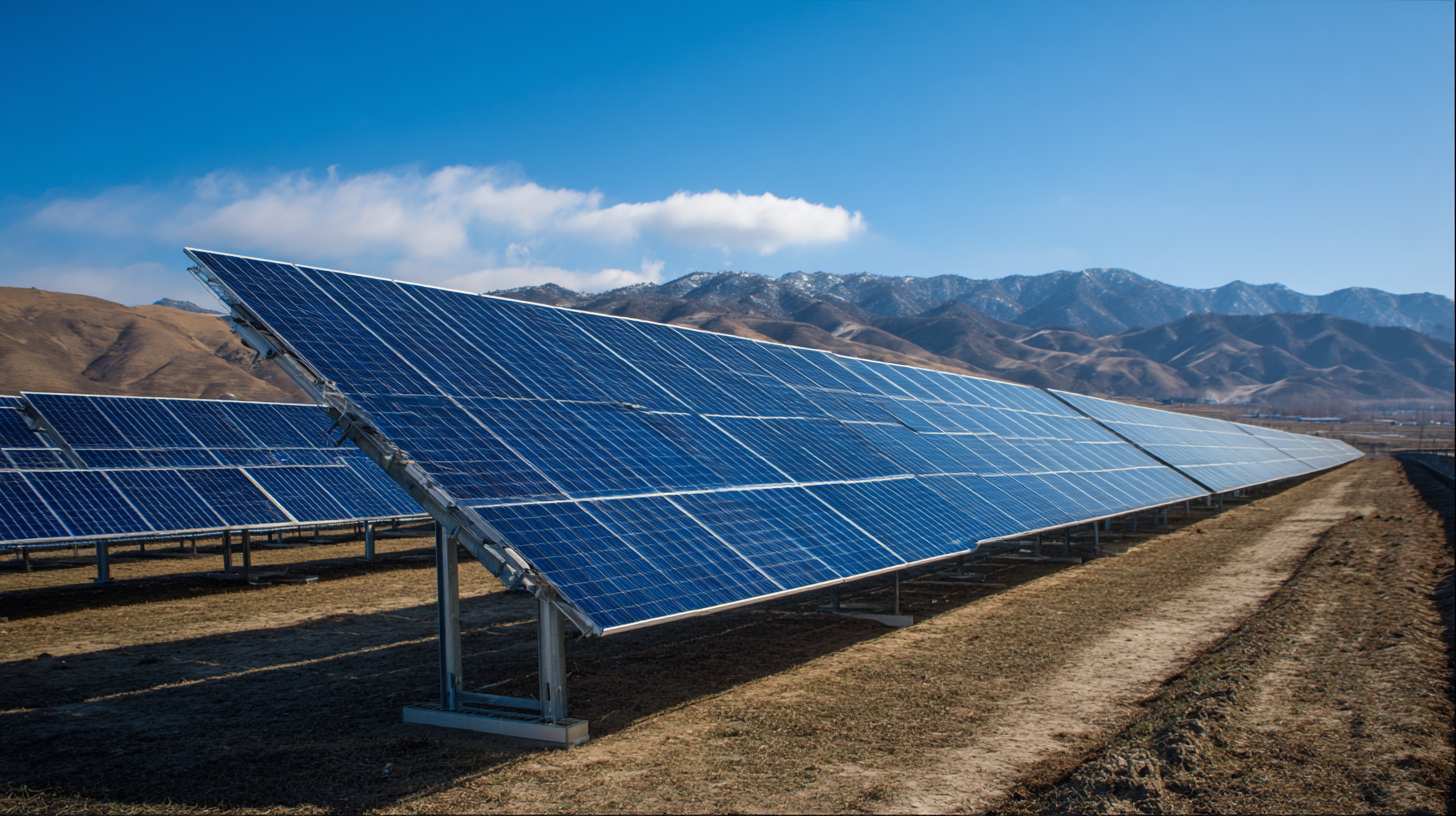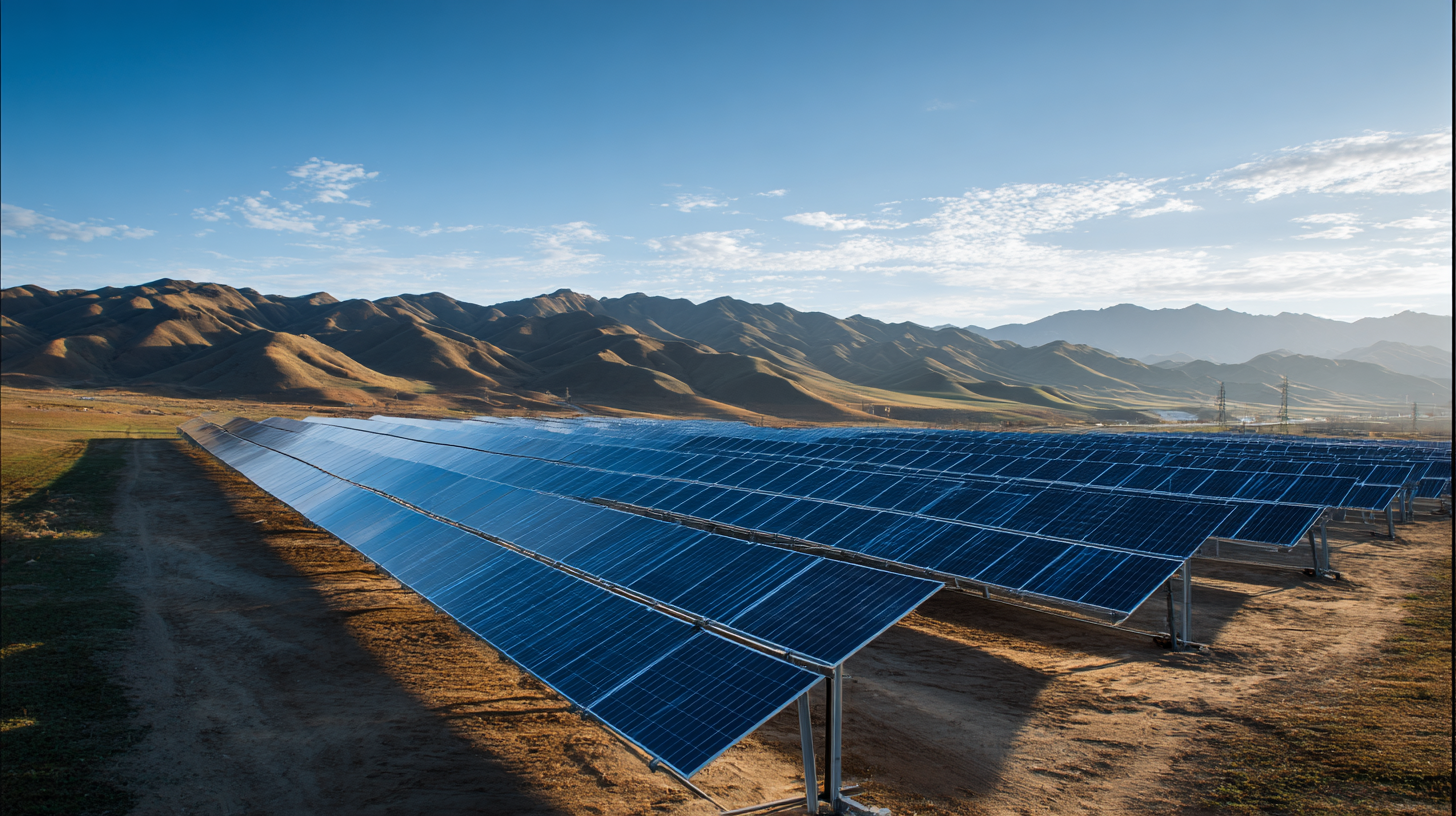As the world increasingly turns to renewable energy sources to combat climate change, solar power panels have emerged as a pivotal technology in the transition to a sustainable future. According to the International Energy Agency, global solar capacity reached over 1,000 gigawatts in 2020, with China leading the charge by accounting for nearly 35% of this total. The rise of Chinese manufacturers in the solar panel industry has not only made solar energy more accessible but has also set new production standards that influence the global market.

In this blog, we will explore how China's premier solar power panels are redefining industry benchmarks and paving the way for innovation, efficiency, and ecological responsibility in solar energy deployment. As we analyze recent industry reports and trends, we will highlight the transformative role of Chinese solar technologies and their implications for the future of renewable energy worldwide.
China has emerged as a leader in the solar power industry, particularly in the production of high-efficiency solar panels. According to a report by the International Renewable Energy Agency (IRENA), high-efficiency panels can convert up to 22% of sunlight into electricity, significantly outpacing traditional models which typically range between 15-17%. This difference not only maximizes energy output but also enhances the viability of solar energy as a primary power source in both urban and rural contexts.
The advantages of high-efficiency solar panels go beyond mere energy conversion rates. A study by the National Renewable Energy Laboratory (NREL) indicates that these advanced panels can reduce the overall land footprint of solar farms by 30%, making them ideal for regions where space is limited. Furthermore, the durability and longevity of these panels, often rated for a lifespan of over 25 years, result in lower long-term costs and increased return on investment for consumers and businesses alike. As China continues to innovate and streamline production processes, it sets a global benchmark for solar technology that prioritizes efficiency and sustainability.
China's commitment to advancing solar power technology has resulted in innovative solar panels that are not only efficient but also environmentally friendly. By utilizing cutting-edge manufacturing processes, Chinese solar panel producers significantly reduce waste and lower carbon emissions during production. This approach not only minimizes the environmental impact associated with solar panel creation but also sets a benchmark for sustainability in the global market.
Moreover, the proliferation of China's solar technology plays a crucial role in reducing greenhouse gas emissions worldwide. As countries increasingly turn to renewable energy sources to combat climate change, China's solar panels provide a viable and effective solution. Their high efficiency and competitive pricing make them accessible for both developed and developing nations, which in turn accelerates the transition to a cleaner energy future.
With continued investments in research and development, China is likely to maintain its leadership in solar technology, fostering an international movement toward greener energy solutions.
As China continues to lead the charge in solar power innovation, the economic impacts of its advancements resonate across global markets. According to the International Energy Agency (IEA), solar energy capacity grew by an unprecedented 28% in 2020, with China accounting for nearly 40% of the world's total solar installations. This rapid expansion not only positions China as a manufacturing powerhouse but also influences global pricing strategies, driving down the cost of solar power generation worldwide.
The implications are significant for emerging economies and developed nations alike. Substantial investments in solar technology foster a competitive landscape where countries can capitalize on reduced energy costs, leading to an expected increase in job creation within the renewable sector. A report by Bloomberg NEF forecasts that global investment in solar energy could reach $4 trillion by 2040, underscoring the importance of China’s role in shaping the market dynamics.
**Tips:** To remain competitive in this evolving market, businesses should focus on forming strategic partnerships with solar manufacturers in China. Investing in training programs for employees can also enhance skills related to solar technology, ensuring teams are equipped to leverage the incoming developments effectively. Additionally, keeping abreast of regulatory changes in both domestic and international markets is essential for optimizing investment opportunities.
| Year | Global Solar Capacity (GW) | Market Share of China (%) | Economic Impact (Billion $) | Innovations Introduced |
|---|---|---|---|---|
| 2020 | 760 | 40 | 15 | Bifacial Modules |
| 2021 | 900 | 45 | 20 | PERC Technology |
| 2022 | 1150 | 50 | 25 | N-Type Cells |
| 2023 | 1400 | 55 | 30 | HJT Technology |
China's dominance in the solar panel industry is largely attributed to its relentless focus on technological advancements. In recent years, Chinese manufacturers have significantly increased the efficiency of photovoltaic cells, with leading firms reporting efficiencies exceeding 23%. According to a report by the International Renewable Energy Agency (IRENA), as of 2022, China accounted for over 70% of the global solar PV production capacity, highlighting its pivotal role in the clean energy transition.

The development of bifacial solar panels is one of the notable innovations stemming from China's commitment to research and development. These panels can capture sunlight on both sides, enhancing energy output by as much as 30%. Market analysis from Wood Mackenzie predicts that the demand for bifacial technology will grow, with shipments likely to reach 50 GW annually by 2025. This technological leap not only sets a new standard for efficiency but also positions China as a leader in sustainable energy solutions, influencing global market trends and encouraging further investment in renewable resources.
 China has rapidly emerged as a global leader in solar energy, driven significantly by strategic government policies that emphasize sustainability and renewable resources. The Chinese government has implemented a variety of incentives, including subsidies for solar panel manufacturers and generous tax breaks for consumers opting for solar installations. These initiatives not only lower the barrier to entry for both producers and consumers but also stimulate technological advancements within the sector, positioning China at the forefront of solar innovations.
China has rapidly emerged as a global leader in solar energy, driven significantly by strategic government policies that emphasize sustainability and renewable resources. The Chinese government has implemented a variety of incentives, including subsidies for solar panel manufacturers and generous tax breaks for consumers opting for solar installations. These initiatives not only lower the barrier to entry for both producers and consumers but also stimulate technological advancements within the sector, positioning China at the forefront of solar innovations.
Additionally, regulatory frameworks have played a crucial role in setting ambitious solar energy targets. The government's long-term commitment to renewable energy sources is illustrated through initiatives like the 13th Five-Year Plan, which outlines specific goals for solar energy capacity. Moreover, partnerships with local governments and private companies have led to significant investments in solar infrastructure, ensuring that solar power becomes a cornerstone of China’s energy strategy. As a result, China is not just producing solar panels; it is setting global standards for solar energy deployment and usage, inspiring other nations to follow suit in their sustainable energy goals.
As electricity costs continue rising, many small households in Maharashtra seek sustainabl...Read More
Uttar Pradesh is making significant progress in adopting renewable energy, particularly so...Read More
With the Indian government actively promoting renewable energy through subsidies and polic...Read More
Tired of watching your electricity bills climb month after month and strain your pockets? ...Read More
Switching to solar energy in Gujarat has never been more profitable! With plenty of sunlig...Read More
If you live in Madhya Pradesh and want to save money on power while living a greener lifes...Read More
If you’re a resident of Bangalore looking to save on your skyrocketing electricity b...Read More
If you live in Karnataka and have been looking for an environmentally friendly, cost-effec...Read More
Delhi is a city that thrives on its vibrant energy, and what better way to complement that...Read More
As electricity costs continue rising, many small households in Maharashtra seek ...Read More
Uttar Pradesh is making significant progress in adopting renewable energy, parti...Read More
With the Indian government actively promoting renewable energy through subsidies...Read More